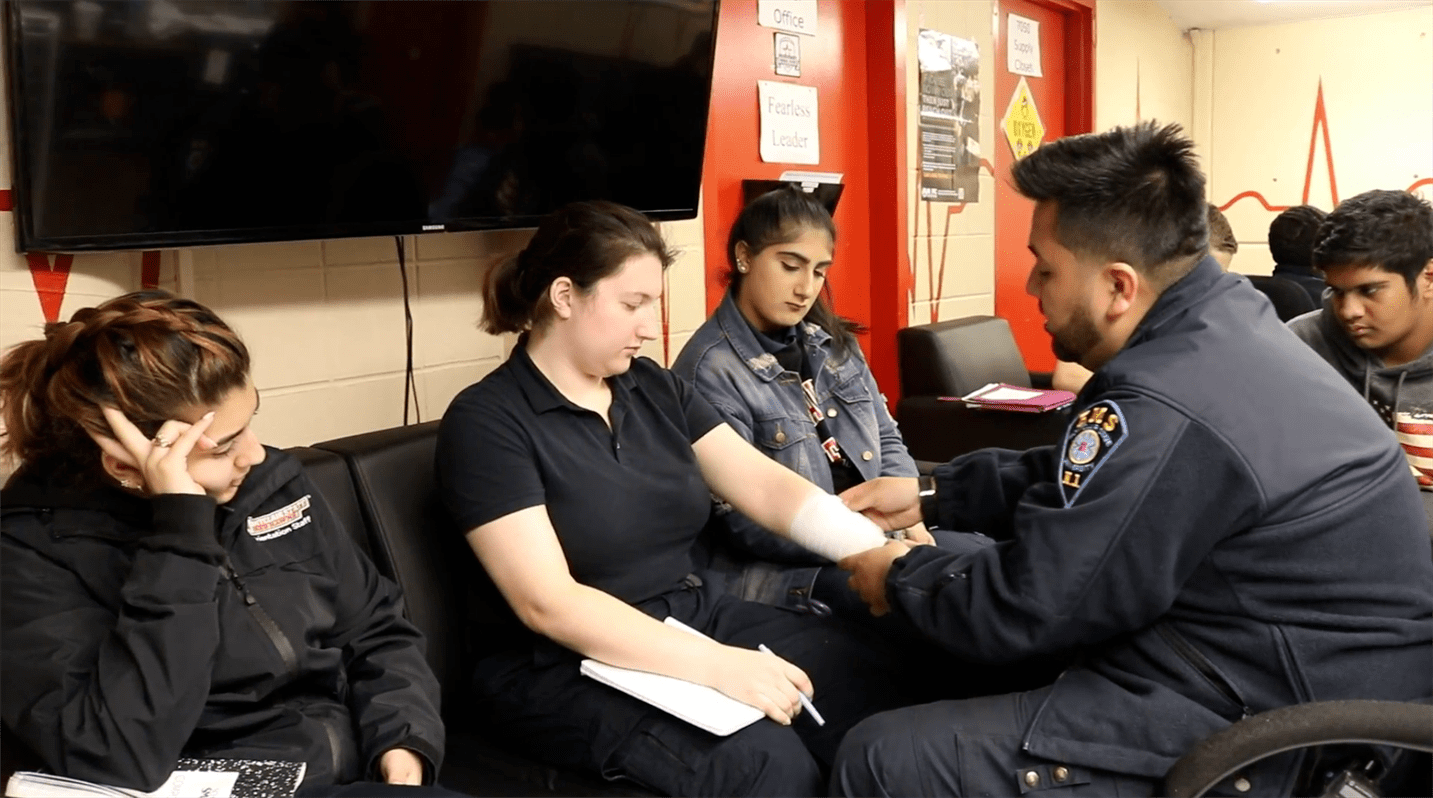Lieutenant Andrew Vasquez, a senior accounting major, sits on the floor, holding a pen against his upper thigh. He tells Samantha Decker, a staffed emergency medical technician (EMT), “I’m bleeding and I think I broke my leg.” He does not give any other description as Decker begins to wrap his leg.
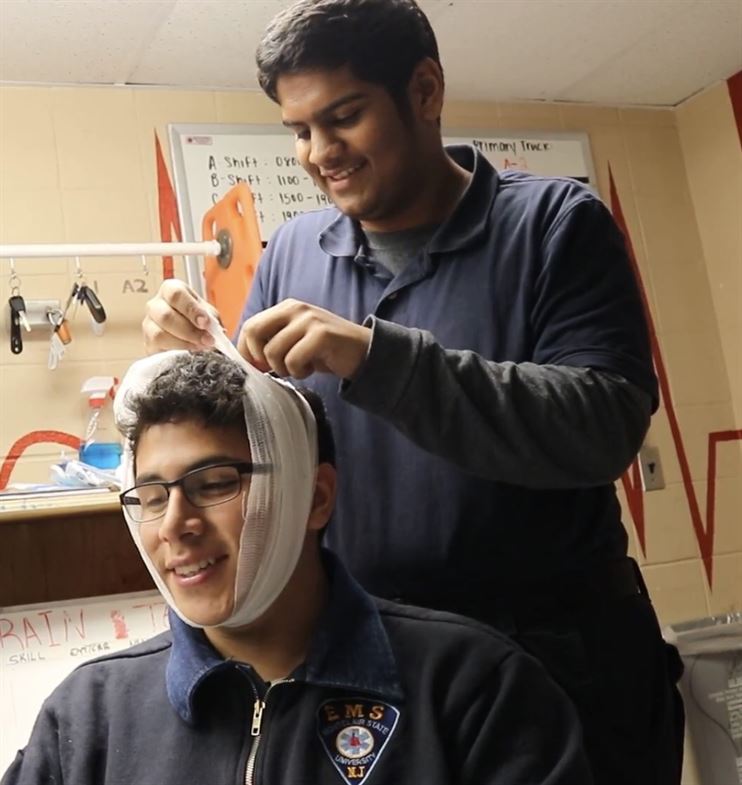
Renzovic Escobedo trains Wahi Bhuiya, a Student Volunteer EMT in head bandaging Drew Mumich | The Montclarion
At the same time, Renzovic Escobedo, a junior molecular biology major and field training officer, is having his head wrapped as he simulates the symptoms of a head injury for another EMT to tend to.
Montclair State University’s Emergency Medical Services (EMS) is fully staffed with student-volunteers. They answer medical emergency calls from on-campus and neighboring towns. The EMS Operations Office is located in the basement of the Student Center, in Room 105.
Currently, 50 students work for the Montclair State EMS.
“Half of the members hold a CPR certification,” Vasquez said. “EMTs are the ones who are state-certified [and] have gone to schooling for it.”
Students with a CPR certification are EMTs in training. They cannot respond to calls alone and they are always being trained on new techniques and medical situations.
Justine Hang, a senior public health major and resident EMT, explains the learning process of a student EMT.
“If there is a skill that they don’t know, we will teach it to them; we are always training, we are always practicing. After I teach them something, the next day if they want to test or practice, I’ll do that,” Hang said.
The EMTs perform regular training drills on everything from CPR, to splinting and simulating carrying an immobile person on a stretcher.
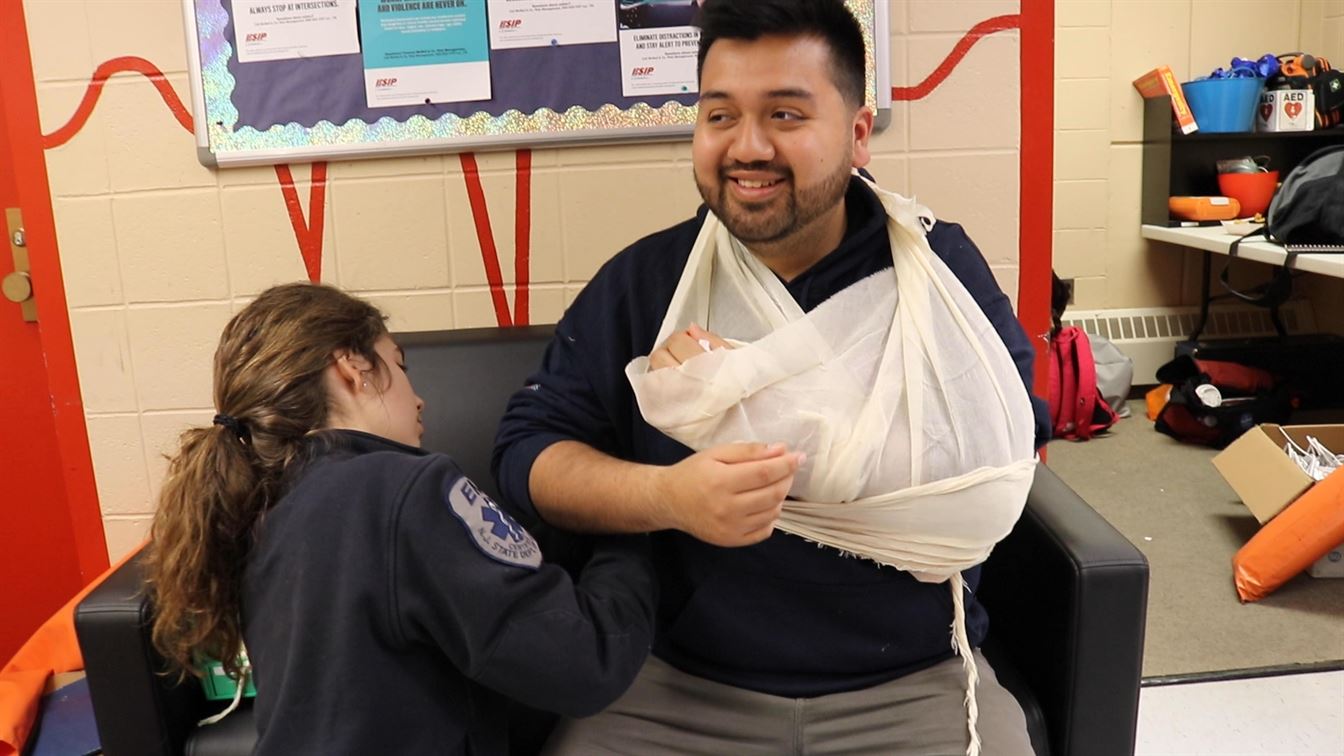
Vasquez trains student volunteer Samantha Becker on how to wrap a broken arm.
Drew Mumich | The Montclarion
“They have to be perfect,” Hang said. “Basically, we test them twice so they know everything.”
The volunteer EMTs get verbal quizzes and are required to be able to perform during hands-on exams.
“Of course it’s not perfect,” Vasquez said. “You can’t always predict what’s going to happen, so if something that they are not familiar with does get thrown at them, their training is a bottom set, so they can figure it out as it goes.”
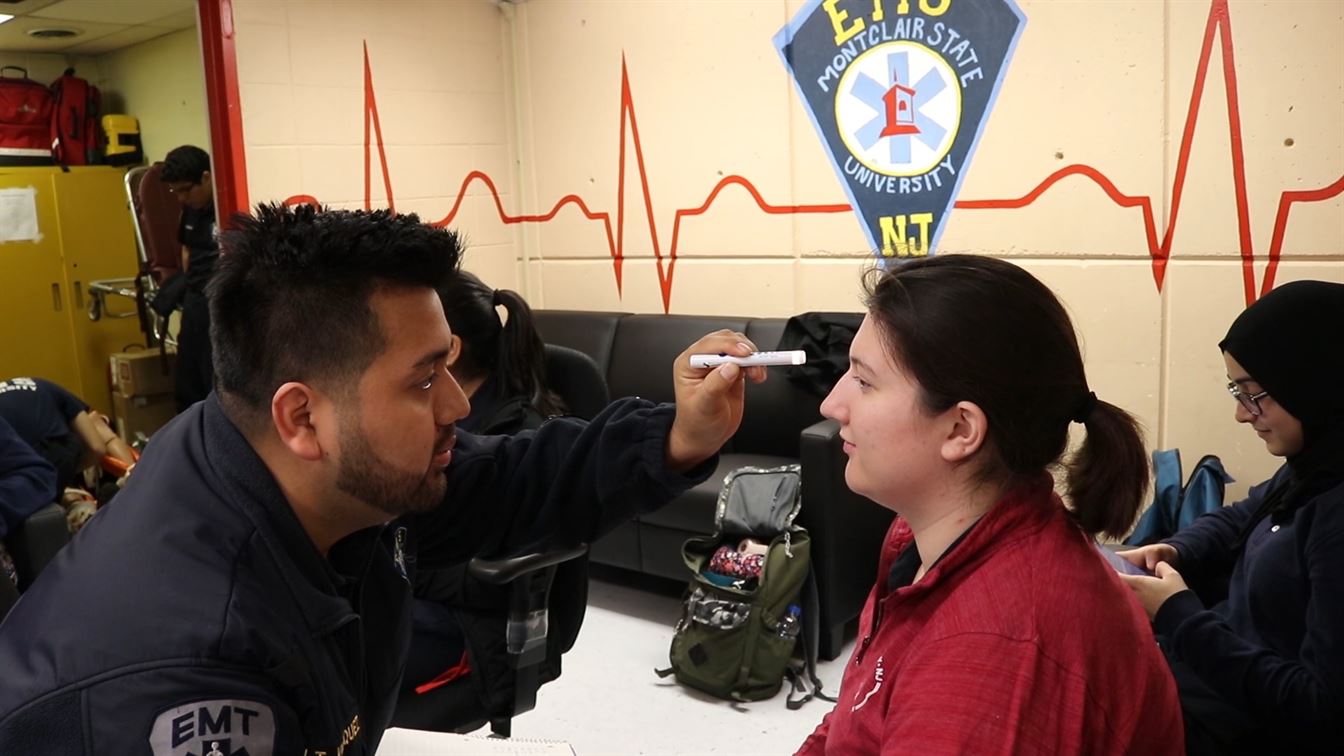
Vasquez trains a student volunteer on how to check a person’s pupils for health indications.
Drew Mumich | The Montclarion
Jacqueline Lawrence, the Director of Montclair State EMS, explains just how much the volunteers have to juggle.
“[Volunteers] definitely have a high workload,” Lawrence said. “On top of doing their normal school work, their extracurriculars, their clubs, their research-labs, normal jobs, members here are required to do 12 hours a week riding shifts … and our resident EMTs do 20 hours, if not more.”
Escobedo explains that resident EMTs are given special privileges through a program that allows them to live in The Village at a discounted price.
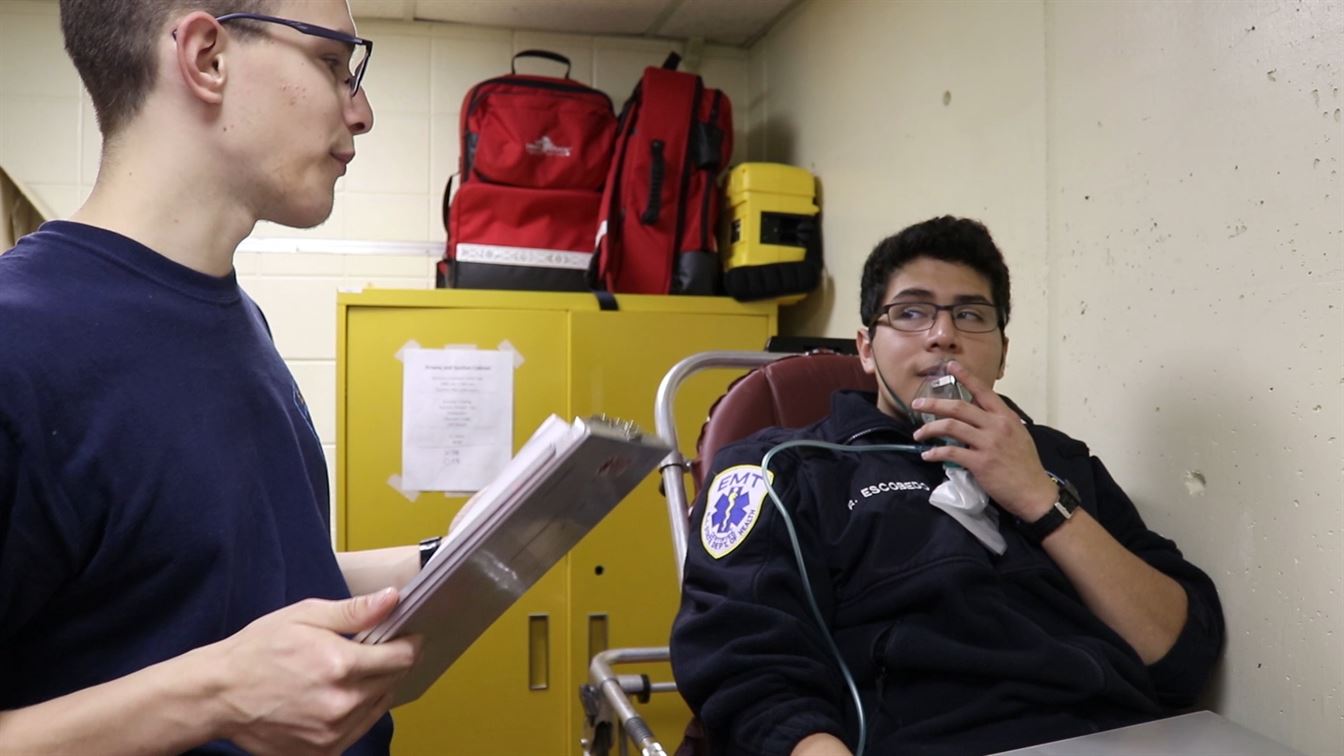
Carson Monks, student volunteer EMT, being given a scenario on how to ask questions to figure out how to properly care for a patient.
Drew Mumich | The Montclarion
“Resident EMTs are given bonuses, but the catch is they have to pull overnight shifts, they have to work 11 to seven, one time a week and cover two weekend shifts, but they interchange in a month,” Escobedo said.
Hang, who works 12 hours of shifts during the week, additional overnight shifts on the weekends and is currently enrolled in seven classes explains her strategy for keeping track of her responsibilities.
“I have a bullet journal,” Hang said. “I put my whole schedule for school, and then I put my EMS hours when I am on shift and then I write down every single day what I’ve got to do.”
If you are experiencing a medical emergency, call (973) 655-5222 to be connected with EMS.

